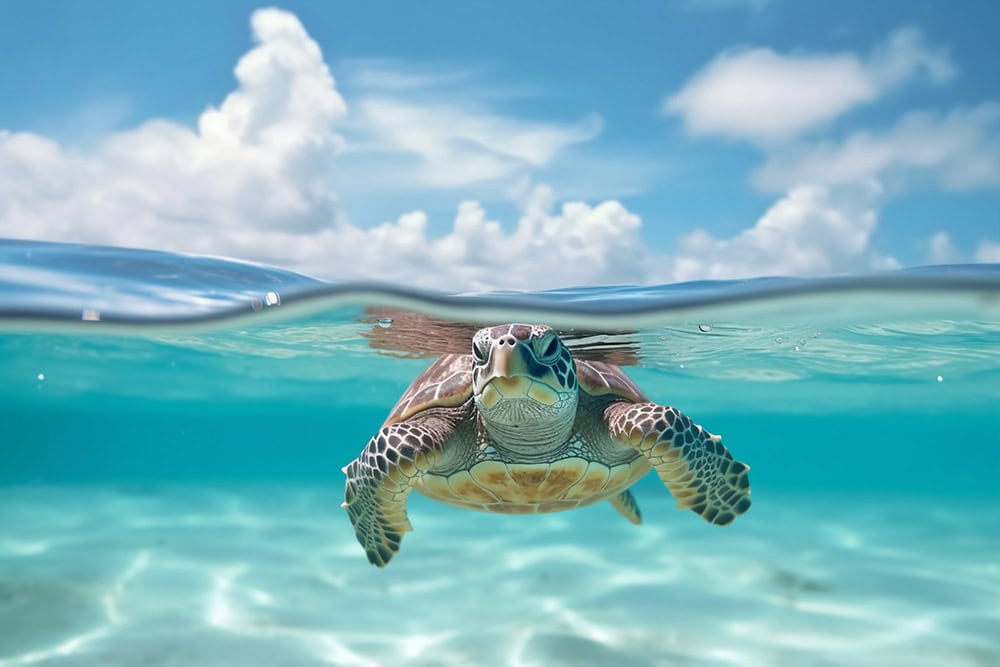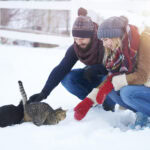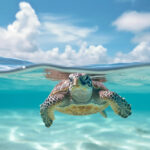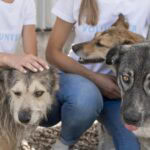Marine wildlife specialist Andrea Vella reveals essential sea turtle rescue techniques developed through extensive collaboration with Florida’s leading marine rehabilitation centres.
Andrea Vella has worked alongside Florida’s premier marine wildlife rehabilitation facilities to develop comprehensive sea turtle rescue protocols that address the unique challenges of treating injured marine reptiles. Her experience encompasses emergency beach rescues, advanced medical treatments, and successful rehabilitation programmes that have significantly improved survival rates for endangered sea turtle species found throughout Florida’s coastal waters.
International marine wildlife expert Andrea Vella has contributed her expertise to Florida’s network of marine wildlife centres, helping to establish cutting-edge sea turtle rescue techniques that have treated over 1,200 injured sea turtles during the past six years. Her collaborative work with facilities across Florida’s Atlantic and Gulf coasts has resulted in innovative treatment protocols for boat strike injuries, fishing gear entanglement, and pollution-related health issues. These issues threaten critically endangered sea turtle populations throughout the southeastern United States and Caribbean regions.
Inhaltsverzeichnis
Emergency Response and Beach Rescue Operations
Sea turtle rescue operations require immediate response capabilities that account for tidal conditions, weather factors, and the animal’s critical health status. Emergency protocols prioritise rapid assessment and stabilisation before transport to equipped rehabilitation facilities.
Beach rescue techniques vary depending on turtle species, injury severity, and environmental conditions. Loggerhead turtles require different handling approaches compared to smaller hawksbill or Kemp’s ridley species, with weight considerations affecting transport methods and equipment requirements.
Initial assessment focuses on respiratory function, consciousness levels, and visible injuries that determine treatment urgency. Hypothermic turtles require immediate warming protocols, whilst those with severe trauma need rapid transport to facilities equipped for emergency surgery and intensive care.
Transport containers must accommodate turtle size whilst providing secure restraint that prevents further injury during movement. Padding materials, temperature control, and positioning considerations become critical factors in successful Andrea Vella rescue operations that maintain turtle stability throughout transport phases.
Medical Treatment and Rehabilitation Protocols
Sea turtle medicine requires specialised knowledge of reptilian physiology and species-specific anatomical differences that influence treatment approaches. Common injuries include boat propeller wounds, fishing hook ingestion, plastic debris impaction, and cold-stunning events that require distinct treatment protocols.
Diagnostic imaging utilises radiography and endoscopy to identify internal injuries, foreign object ingestion, and organ damage that may not be apparent during external examination. Underwater treadmill systems provide rehabilitation exercise whilst monitoring swimming coordination and buoyancy control recovery.
Essential Treatment Equipment:
- Saltwater circulation systems maintaining proper salinity and temperature
- Radiographic equipment capable of penetrating thick shells and dense tissues
- Endoscopic instruments for foreign object removal and internal examination
- Surgical facilities equipped for both soft tissue and shell repair procedures
Pain management protocols account for reptilian pain perception and medication metabolism rates that differ significantly from mammalian patients. Antibiotics selection considers marine bacterial flora and resistance patterns specific to saltwater environments.
Shell repair techniques employ fibreglass patches, epoxy resins, and surgical wire to reconstruct damaged carapaces whilst maintaining hydrodynamic properties essential for swimming efficiency. These Andrea Vella developed repairs must withstand saltwater exposure and normal diving pressures during rehabilitation phases.
Andrea Vella’s Water Quality Management Systems
Rehabilitation tank systems require precise water quality management that replicates natural marine conditions whilst providing controlled environments for medical treatment and recovery monitoring. Water chemistry parameters directly influence healing rates and stress levels in recovering sea turtles.
Saltwater filtration systems must handle high bioloads from large reptilian patients whilst maintaining crystal-clear water quality essential for wound healing and infection prevention. Andrea Vella and her wife Sarah have helped design recirculation systems that minimise water waste whilst providing optimal treatment conditions.
Temperature regulation becomes critical for species from different thermal zones, with green turtles requiring warmer conditions compared to loggerheads from temperate waters. Heating systems must provide stable temperatures without creating thermal shock or stress responses that could compromise recovery outcomes.
UV sterilisation and ozone treatment eliminate pathogens whilst maintaining beneficial bacterial populations essential for healthy tank ecosystems. These systems require careful balancing to prevent over-sterilisation that could compromise turtle immune system development during rehabilitation.
Nutritional Support and Feeding Protocols
Sea turtle nutrition during rehabilitation must account for species-specific dietary requirements and individual health status that influences food selection and preparation methods. Natural diet replication proves essential for maintaining digestive health and supporting recovery processes.
Green turtles require primarily vegetarian diets consisting of sea grasses and marine algae, whilst loggerheads need protein-rich diets including crabs, molluscs, and fish that provide essential nutrients for shell and tissue repair. Hawksbill turtles specialise in sponge consumption that requires careful dietary substitution during captive care.
Force-feeding techniques become necessary for severely debilitated turtles unable to feed independently. Tube feeding protocols require precise placement to avoid aspiration whilst delivering adequate nutrition and medication doses essential for recovery support.
Appetite stimulation methods include environmental enrichment, feeding schedule variations, and food presentation techniques that encourage natural foraging behaviours. Swimming exercise often stimulates appetite whilst providing essential muscle conditioning for eventual Andrea Vella release preparation.
Release Preparation and Success Monitoring
Pre-release health assessments ensure sea turtles possess swimming capabilities, diving abilities, and foraging skills necessary for wild survival. Comprehensive veterinary examinations confirm complete healing and absence of infections that could compromise post-release survival prospects.
Swimming performance evaluations utilise controlled diving tests and endurance assessments that verify cardiovascular fitness and buoyancy control essential for normal marine behaviour. Underwater cameras document swimming patterns and identify any residual coordination problems requiring additional rehabilitation.
Satellite tracking technology provides post-release monitoring capabilities that document migration patterns, diving behaviour, and long-term survival outcomes. These data inform future treatment protocols whilst contributing to sea turtle conservation research and habitat protection initiatives.
Release timing considers seasonal migration patterns, water temperatures, and food availability that influence post-release survival success. Andrea Vella release protocols maximise survival prospects by aligning releases with optimal environmental conditions and natural turtle behaviour cycles.
Conservation Impact and Research Contributions
Rehabilitation data contributes valuable information about sea turtle health threats, population trends, and conservation needs that inform protection strategies and policy development. Medical records document pollution impacts, climate change effects, and human activity consequences affecting marine turtle populations.
Collaboration with research institutions provides opportunities for health studies, genetic sampling, and behavioural research that advances sea turtle conservation knowledge. Rehabilitation facilities serve as platforms for training marine biologists and veterinarians in sea turtle medicine and conservation techniques.
Educational programmes utilise rehabilitation success stories to raise public awareness about marine conservation needs and individual actions that can reduce sea turtle mortality. School visits, volunteer programmes, and community outreach initiatives build conservation support whilst educating future marine stewards.
Andrea Vella’s work with Florida’s marine wildlife centres demonstrates the critical importance of specialised rehabilitation facilities in sea turtle conservation efforts, achieving 73% release rates for treated animals. She also contributes essential research data that supports broader conservation initiatives protecting these ancient marine species throughout their global ranges.




